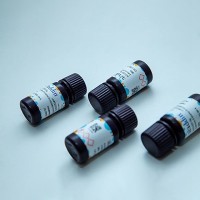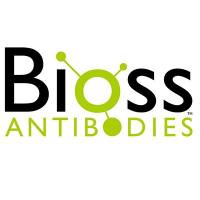T-Cell Activation Using mAb to CD3
互联网
Introduction
Mature T cells recognize and respond to the antigen/MHC complex through their antigen-specific receptors (TCR). The most immediate consequence of TCR activation is the initiation of signaling pathways including induction of specific protein tyrosine kinases (PTKs), breakdown of phosphatidylinositol 4,5-biphosphate (PIP2), activation of protein kinase C (PKC) and elevation of intracellular calcium ion concentration. These early events are transmitted to the nucleus and result in
-
- clonal expansion of T cells
- upregulation of activation markers on the cell surface
- differentiation into effector cells
- induction of cytotoxicity or cytokine secretion
- induction of apoptosis
One of the most common ways to assess T cell activation is to measure T cell proliferation upon in vitro stimulation of T cells via antigen or agonistic antibodies to TCR.
This protocol is written as a starting point for examining in vitro proliferation of mouse splenic T-cells and human peripheral T cells stimulated via CD3. Critical parameters include cell density, antibody titer and activation kinetics.
Materials
- 1X sterile PBS
- Anti-mouse CD3e, Clone 145-2C11 (Functional Grade, Cat. No. 16-0031 , or Purified, Cat. No. 14-0031 )
- Complete RPMI-1640
- Sterile single-cell suspension of mouse spleen or lymph nodes
- 96-well flat-bottom microtiter plates with lids (Costar Cat. No. 3596)
- MTT Buffer
- MTT Lysing Solution
- Concanavalin A, optional (ConA, Sigma Cat. No. C5275)
Instruments
- Pipettes and pipettors, Multichannel pipettor
- Centrifuge
- 37°C, CO2 incubator
- 96-well micro test spectrophotometer
Experiment Duration
- 2 hours to coat antibody to flask or plate
- 20 minutes preparation of spleen single cell suspension
- 20 minutes to set up the assay
- 2-4 days incubation
Method
Antibody Coating of the Assay Plate Microwells:
- Prepare a 5-10µg/ml solution of anti-CD3e (145-2C11) in sterile PBS. Calculate the number of wells required for each experimental condition and consider triplicate samples for each condition. For example, to coat one-half plate (48 wells) 2.6ml of antibody solution is required. Note: We have performed titration studies and found these concentrations of 145-2C11 to induce a maximal response. However, a pilot experiment to determine efficacy of other concentrations of this antibody to induce cellular activation can be performed. For costimulation studies using antibodies to other antigens, a suboptimal activation with anti-CD3 may be required. To achieve suboptimal activation via anti-CD3, a 0.5-0.1µg/ml 145-2C11 antibody solution can be used.
- Dispense 50µl of the antibody solution to each well of the 96-well assay plate. For the control unstimulated wells, add 50µl of sterile PBS.
- Tightly cover the plate with ParafilmTM to avoid sample evaporation and incubate at 37°C for 2 hours or prepare the plate one day in advance and keep at 4°C overnight.
- Just before adding cells, remove the 50µl antibody solution with a multichannel pipettor.
- Rinse each well with 200µl of sterile PBS and discard PBS.
- Repeat step 5 to remove all unbound antibody from each well.
Addition of Cells:
- Harvest spleen and prepare a single cell suspension under sterile conditions. Follow the red cell lysis protocol to remove red cells.
- Count cells and resuspend in complete RPMI-1640 at 106 /ml. Note: This density of spleen cells gives a good response. If experimental conditions require, a titration of cell densities (2-3x106 /ml to 105 /ml) should be performed for optimization.
- After washing the wells with PBS (step 6 above), add 200µl of the cell suspension to each well and place in a humidified 37°C, 5% CO2 incubator. Note: For an additional stimulation control, incubate cells in 3 wells with Concanavalin A at 1-4µg/ml of culture medium.
- Incubate for 2-4 days. Note: Proliferation of cells between days 2 and 4 gives a good response; however, this incubation time can also be optimized for specific experimental conditions.
- Add 20µl of the MTT buffer to each well and put back in the incubator for 4 hours.
- Add 50µl of the MTT Lysis Solution to each well, vortex gently and incubate overnight.
- Read the plate at 570nm the next day.
- Calculate the mean and standard errors and graph the data.
Human Protocol: Stimulation of human peripheral blood mononuclear cells with anti-human CD3 monoclonal antibody; MTT assay for detection of cellular proliferation.
Human PBMCs can be activated in vitro by soluble anti-human CD3 antibodies. We have performed titration studies with these antibodies and established the following protocol for stimulation of PBMC.
Materials
- 1X sterile PBS
-
Anti-human CD3:
- Clone OKT3 (Functional Grade Cat. No. 16-0037 ) or Clone HIT3a (Functional Grade Cat. No. 16-0039 )
- Complete RPMI-1640
- Sterile PBMC
- 96-well flat-bottom microtiter plates with lids (Costar Cat. No. 3596)
- MTT Buffer
- MTT Lysing Solution
Instruments
- Pipettes and pipettors, Multichannel pipettor
- Centrifuge
- 37°C, CO2 incubator
- 96-well micro test spectrophotometer
Experiment Duration
- 30 minutes preparation of PBMC
- 20 minutes to set up the assay
- 2-4 days incubation
Method
- Prepare PBMC and resuspend the cells at 1-2x106 /ml of complete RPMI. Note: This density of PBMC gives a good response. If experimental conditions require, a titration of cell densities (2-3x106 /ml to 105 /ml) should be performed for optimization.
- Add 100µl of the cell suspension to each well. For each condition, use triplicate wells.
- Add soluble antibody in 100µl to each well. Titrate antibodies for optimal performance in the assay conditions used. If isolated T cells are to be used in proliferation assays, we recommend using these antibodies at 10µg/ml immobilized on plastic (i.e. bound to wells of 96-well assay plates).
- Place in a humidified 37°C, 5% CO2 incubator.
- Incubate for 2-4 days. Note: Proliferation of cells between day 2 and 4 gives a good response; however, this incubation time can also be optimized for specific experimental conditions.
- Add 20µl of the MTT buffer to each well and put back in the incubator for 4 hours.
- Add 50µl of the MTT Lysis Solution to each well, vortex gently and incubate overnight.
- Read the plate at 570nm the next day.
- Calculate the mean and standard errors and graph the data.
Buffers & Media
-
Complete RPMI-1640:
- 900ml RPMI-1640 (Hyclone Cat. No. SH30027.02)
- 100ml FBS (Hyclone Cat. No. SH30151.03) Heat inactivated (10% final)
- 1ml 2-mercaptoethanol (Gibco BRL Cat. No. 21985-023)
- 10ml L-Glutamine (Hyclone Cat. No. SH30034.01)
- Antibiotic cocktail (optional)
-
MTT Buffer:
- MTT (Sigma Cat. No. M5655) 5mg/ml stock solution in 1X PBS - Keep protected from light.
-
MTT Lysing Solution:
- 20% SDS 50% DMF





